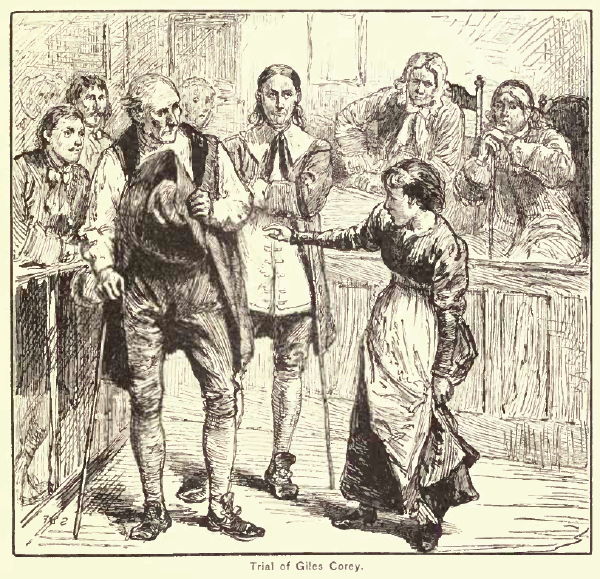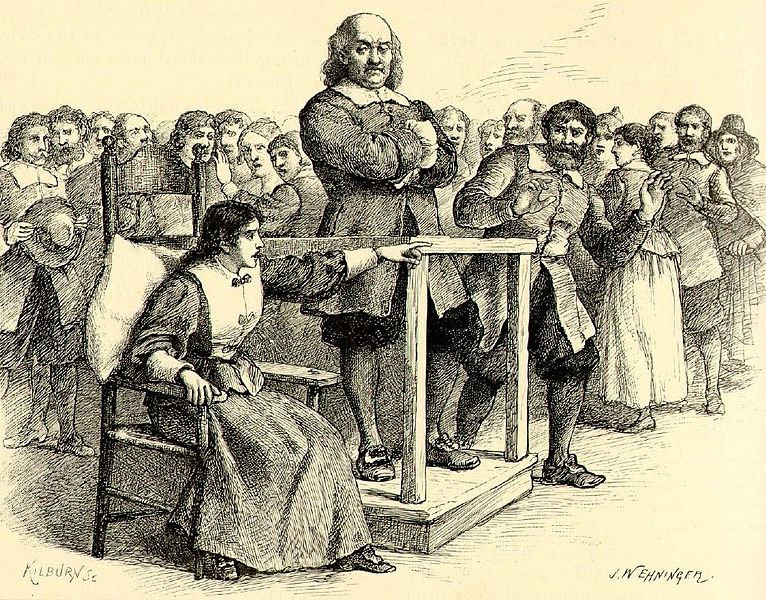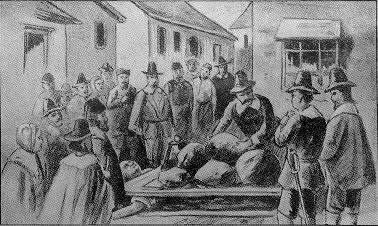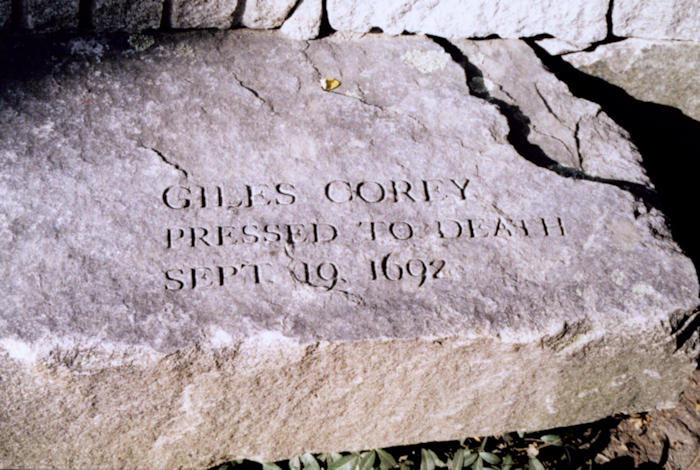LIBRARY BLOG
Giles Corey: The Unique Story a Victim in the Salem Witch Trials
With the hostility medieval European Christians harbored towards members of the Old Religion and the subsequent Inquisition, Burning Times, and more, it was inevitable that the persecution would make its way across the Atlantic to Puritan New England by the 17th century. Salem Village in Massachusetts served as a breeding ground for one of America’s most known travesties, later inspiring tales like The Crucible and The House of the Seven Gables.
When Reverend Samuel Parris was called to Salem Village to preach in the newly granted church, he brought with him a Caribbean woman named Tituba, the family’s slave who often times entertained the Parris children with pieces of her country’s culture. As Elizabeth Parris and a group of her friends played one January night in 1692, they tested a voodoo method that Tituba affirmed would let them see the faces of their future husbands in an egg white. The girls crowded next to each other as they watched the egg white be dropped into warm water, excited at the prospects of their forthcoming romances. To Elizabeth’s horror, however, she watched as the egg white morphed not into the visage of a man, but into the shape of a coffin. She was sent into hysterics, convulsing and acting erratically. Her inconsolable behavior seeped into the other girls, leading their Puritan community to believe they were bewitched. The terrified villagers encouraged the girls to testify against the witches who were bringing the Devil into their lives. Thus, the deluge of chaotic accusations towards innocent women and men began, marking the start of the Salem Witch Trials.
While it was mostly women who were slandered, Giles Corey, an 80-year-old man, was one of only six men who faced the misfortune of trial. Corey was a hardworking farmer, but the success of his properties didn’t lend to the village’s view of his character. He was a violent man. Scandal seemed to follow him, and he was often a scapegoat for whatever problem arose. Therefore, it wasn’t shocking when one of the afflicted girls, Ann Putnam Jr., named him to the court. Claims against him flooded in. It was then attested that Benjamin Gould saw the specters of Corey and other accused staring at him while he was in bed, pinching him as they vanished. Ann’s father, Thomas Putnam, asserted in court that the witches harassing his daughter had threatened to press her to death—restraining her on her back while slowly adding more and more heavy rocks on top of her. According to his story, a “ghost in a winding sheet” came to Ann, telling her that Corey had killed him in the same manner and made a contract with Satan to protect himself from a death by hanging. On April 18, 1692, official complaints about Corey were given to the court for his “tormenting” the afflicted girls.
Corey declined to admit to anything, choosing to leave his inditement unanswered. It was New England law that anyone who refused to answer an issued inditement could not be tried. He couldn’t be found guilty if he was never tried. Even with this loophole, he most likely knew fighting for his innocence was a lost cause. He wrote out a will entailing that his property and possessions be handed over to his son-in-law. The magistrates overseeing the trials were enraged by Corey’s attempts to weasel his way out, so they brought back an archaic law that allowed an individual unwilling to appear in court to be tortured until they either confessed or died. They excommunicated the man on September 14th, 1692, and set out to pull his declaration of guilt from him shortly thereafter.
The form of torture the magistrates chose for Corey was pressing*. He was stripped naked, staked into the ground, and covered by a sheet of wood in a field besides the prison he was kept in. One by one, large stones were placed on top the wood. Between the placement of each stone, the magistrate would demand Corey confess, but as the stones piled and the weight increased to a crushing force, Corey still refused to give an admission. Some lore surrounding the event say that the only words he spoke were a haunting command of “more weight.” Sources conflict on how long he remained buried neck down by rocks before succumbing to the body trauma. Cawthorne’s Witches: History of Persecution, for example, states two days whereas Saari’s Witchcraft in America states nine. Regardless of the exact duration, he proved to be resilient. Giles Corey died on September 19th.
As jolting as this was to the village, the Witch Trials raged on for another year, ending innocent lives, pitting neighbor against neighbor, and staining Massachusetts forever. Joseph Green replaced Samuel Parris as reverend in 1697. He made it a point to do whatever in his power he could to repair the damage the Trials caused to Salem Village. One notion was to formally revoke Corey’s excommunication in 1712. Though it was too late for Corey to feel the effects, the reversal aided in adding peace in the community and protecting the reputation of Corey’s descendants.
An unknown poet wrote a ballad for the only one of the accused to die by pressing:
Giles Corey was a Wizzard strong,
And a stubborn Wretch was he,
And fitt he was to hang on high
Upon the Locust Tree.
So when before the Magistrates
For Triall did he come,
He would no true Confession make
But was compleatlie dumbe.
“Giles Corey,” said the Magistrate,
“What hast thou heare to pleade
To these that now accuse thy Soule
Of Crimes and horrid Deed?”
Giles Corey—he said not a Worde,
No single Worde spake he;
“Giles Corey,” sayeth the Magistrate,
“We’ll press it out of thee.”
They got them then a heavy Beam,
They laid it on his Breast;
They loaded it with heavie Stones,
And hard upon him prest.
“More weight,” now said this wretched Man,
“More weight,” again he cryed,
And he did no Confession make,
But wickedly he died.
*Whether they chose this method with Ann Putnam Jr.’s assertation that Corey had a pact with the Devil to prevent him from hanging in mind is unclear. However, when Putnam heard the details of Corey’s execution, she thought it to be divine justice, deeming this end appropriate.
All resources cited can be found in the Main Branch Library’s Reference Department or a database available on www.mytpl.org!
The Salem Witch Trials: The Case against John and Elizabeth Proctor
Witchcraft in America, Peggy Saari, 2001
Witches: History of a Persecution, Nigel Cawthorne, 2004
The Encyclopedia of Witches, Witchcraft & Wicca, Rosemary Ellen Guiley, 3rd ed., 2008
The Salem Witch Trials, Marilynne K. Roach, 2004
Salem Witchcraft and Hawthorne’s House of the Seven Gables, Enders A. Robinson, 1992
-Lillian LeCompte, Reference Department




